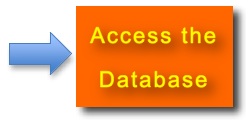Vernacular Aristotelianism in Renaissance Italy, c. 1400-c. 1650
The Vernacular Aristotelianism in Renaissance Italy Database is a searchable catalogue of Aristotelian works written or published in Italian between 1400 and 1650. The census covers both manuscript and printed sources preserved in libraries in Italy, other European countries and the US.
The database accessible here is in need of updating, but currently covers over 200 printed editions, 200 manuscript works, 130 authors, 65 dedicatees and 115 printers. Since the research is still in progress, these figures are expected to rise in the next release. The census already counts a wide range of materials constituting a critical mass suitable for general overviews as well as closer examinations.
Remarks, suggestions and comments are welcome and should be sent to d dot a dot lines at warwick dot ac dot uk.
Structure of the database
WORKS
The Vernacular Aristotelianism in Renaissance Italy Database has a flexible structure suitable for the description of an extremely heterogeneous set of works. The catalogue is conceived as a census of WORKS related to the Renaissance interpretation of Aristotelian and pseudo-Aristotelian texts. The main level of the database numbers thus lists records relevant to specific works: for each work basic details are provided, such as Author, Title, Date, original Dedicatee as well as references to the Aristotelian texts concerned. Additional fields give details about Genre, Text typology and Branch of philosophy. Each record is also linked to a list of relevant manuscript copies and printed editions in order to let users have a general overview of the actual circulation of specific texts. A brief description and basic bibliography complete this level’s information.
PRINTED EDITIONS & MANUSCRIPTS
Through the sub-levels Printed Editions and Manuscript Works users may access records of specific manuscript copies and prints. Descriptions concern textual elements, material aspects, paratextual details as well as information on dedicatees. Whenever possible the database gives direct links to online reference tools such as ISTC and Gesamtkatalog der Wiegendrucke for incunabula and Edit16 for sixteenth-century editions. Given the large number of digitized early printed books currently available online, the database systematically refers to digital libraries such as GoogleBooks, BSB-MDZ, Gallica, Museo Galileo, ECHO, Archimedes Project and others.
INDICES: AUTHORS, DEDICATEES, PUBLISHERS, MANUSCRIPTS
The database also contains indices of Authors, Dedicatees, Printers and Manuscripts. Authors, dedicatees and publishers’ records present basic biographical details (dates, main locations) and relevant references to online sources such as DBI (Dizionario Biografico degli Italiani) and Edit16.
Searching the database
The database opens by default on the main level (Works). All the levels are accessible through relevant ‘buttons’ on the right side of the page. Users may choose to search or browse the records. Any field is searchable: simple searches are possible as well as advanced ones (two or more fields are searchable simultaneously; operators may be employed when filling a field).
OPERATORS
NB Since the Vernacular Aristotelianism in Renaissance Italy Database is a relational one, each level is linked to the others. Searching for a specific work in the main level thus allows users to access relevant records in other levels. It is then possible to browse indices of authors, dedicatees, publishers and manuscripts in order to get lists of related works.
Database Launch - University of Warwick
Wolfson Research Exchange (University Library, 3rd floor), 1st May 2012, 12am-2pm
The AHRC project 'Vernacular Aristotelianism in the Italian Renaissance' (2010-13) launched the first substantial output of its research programme on Tuesday, 1 May 2012 at the University of Warwick. This was a splendid opportunity to see the results of 18 months' work in Italian and foreign libraries, culminating in the first electronic census of Italian (vs. Latin) interpretations of Aristotle in the period. The database, which is now publicly available, includes both manuscript and printed works that translated, commented on, or otherwise interpreted the works of Aristotle for a broad public from around 1400 to around 1650. The census is based on a direct inspection of the relevant works and allows a first appraisal of the variety and breadth of interest by the Italian-reading public in the works of Aristotle, whose thought continued to form the backbone of Renaissance learning until at least 1650. (The database is not yet complete, but is now fully usable.)


